Have Wheels, Will Travel: Places My Chair Likes to Go
A wheelchair stands on an isolated forest road, grazes in a field with tall grass, and floats in a pond. Thus, an inanimate object, often considered a sign of disability, develops topophilia in Places My Chair Likes To Go, by Goa-based writer and poet Salil Chaturvedi.
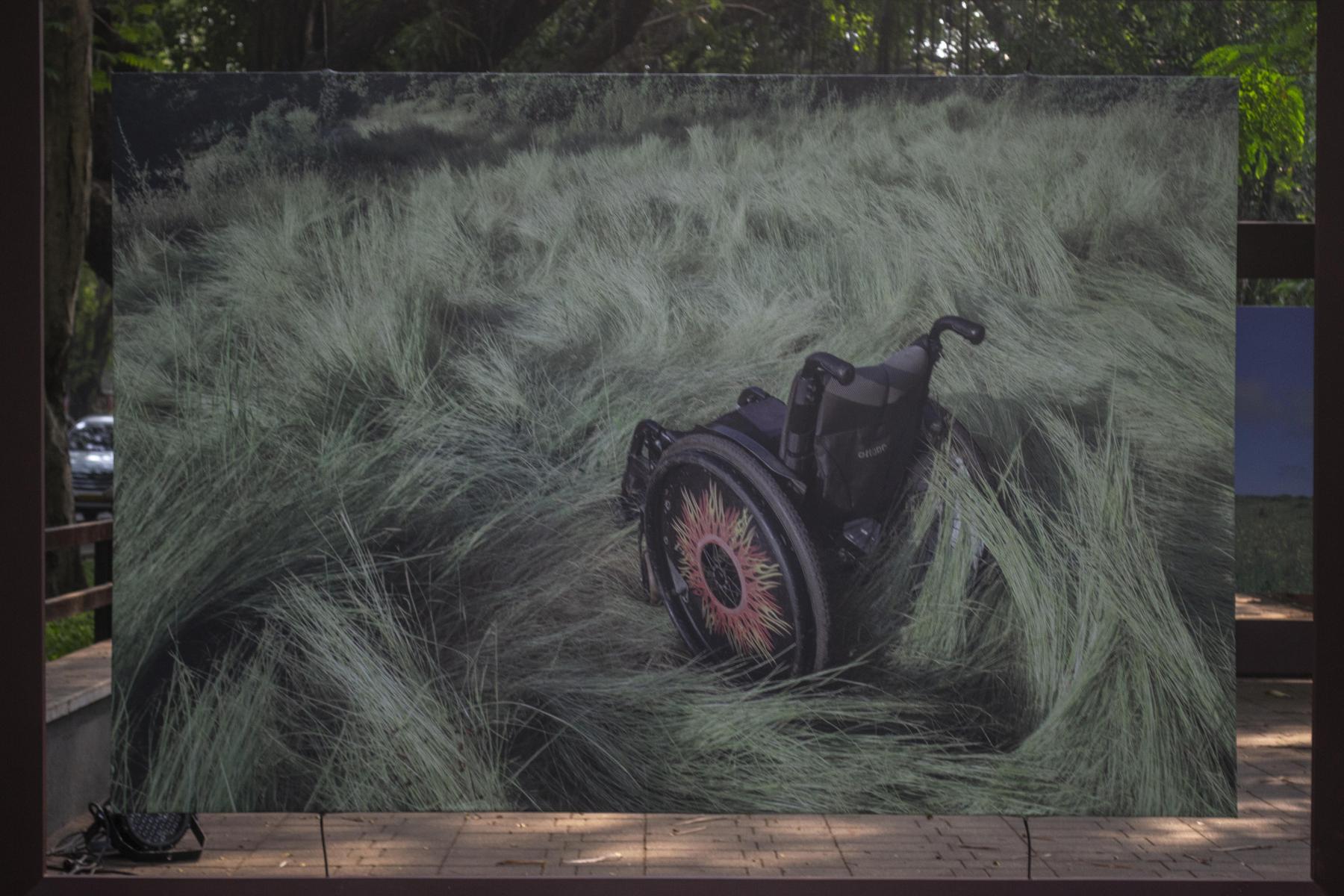
A solitary wheelchair in the middle of a lush field. Installation view of Places My Chair Likes to Go in Panjim, Goa.
The installation was placed at the scenic promenade of Goa’s capital city, Panjim, as part of the Serendipity Arts Festival, held from December 15 to December 23. The installation, consisting of eight tall images, invites the viewer on a journey anchored by a solitary wheelchair in the wilderness that makes one wonder how it could have travelled there.
Chaturvedi’s work makes a strong case for inclusivity, taking forward the motto of have wheels, will travel. “At a time when persons with disabilities are still largely missing from spaces—literary, social, political and cultural—the photographs make present this absence through the artifice of an empty wheelchair,” says Chaturvedi, who is himself a wheelchair user.
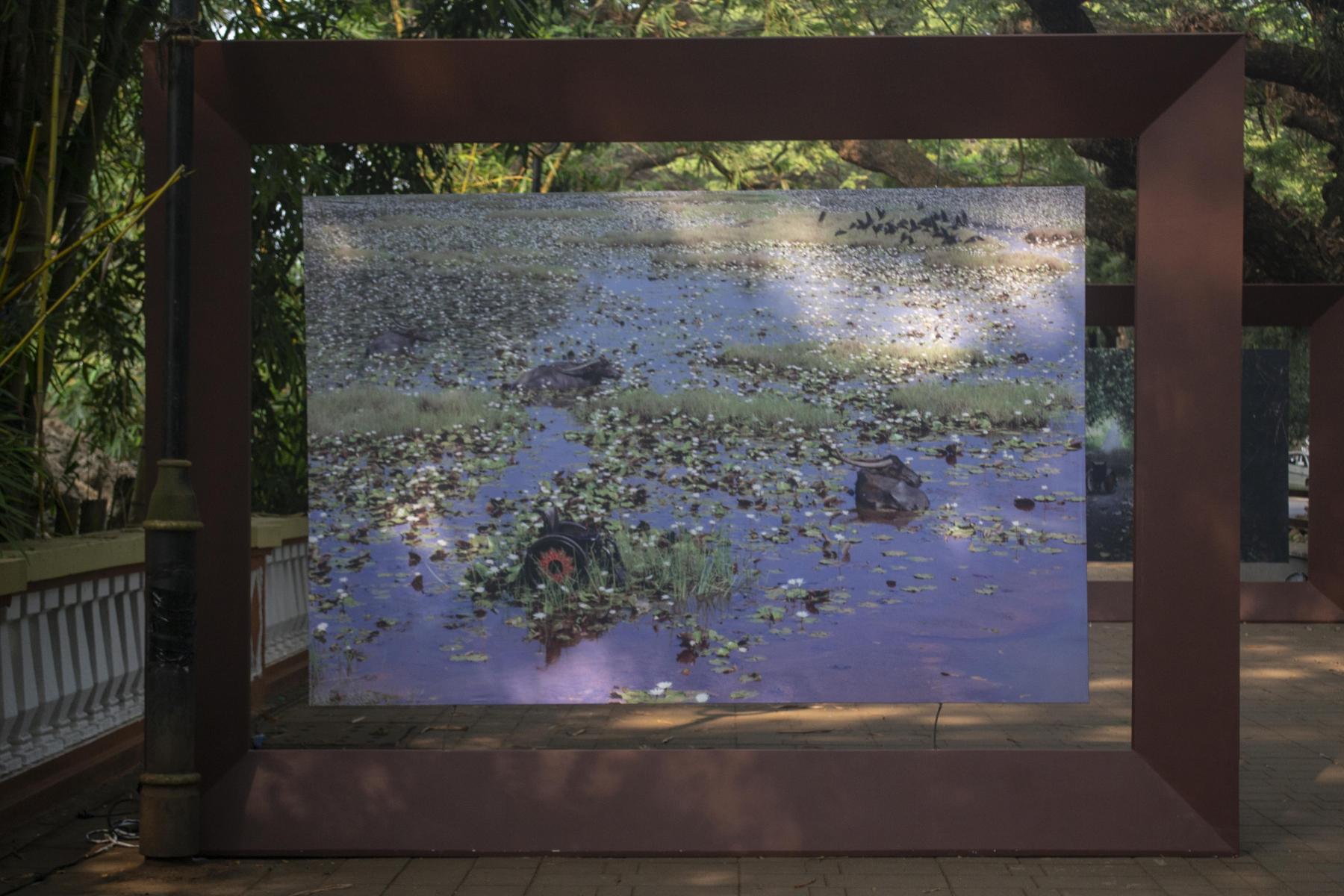
Installation view of the wheelchair submerged in a lake, surrounded by vegetation.
The work raises several questions regarding the perception of disabilities and true inclusivity, bringing together politics, ecology, desire and the essence of being by inciting the viewer to embody the journey and become the wheelchair itself. As one looks closer, the images start to reflect the solitude and loneliness experienced by the wheelchair user, forcing us to confront our preconceived notions of disability.
Chaturvedi adds that the images invert the problematic and overused phrase “wheelchair bound” to present a celebratory image of an unbound wheelchair.
In order to further the dialogue around accessibility and making public spaces wheelchair friendly, Chaturvedi has made the project interactive. The volunteers at the site, Nabila and Gryselle, highlighted the concept of the installation, and they talked about the need for wheelchair ramps in public spaces. They also shared an illustrated children’s book, My Brother’s Wheeeeelchair and a brochure, both written by Chaturvedi.
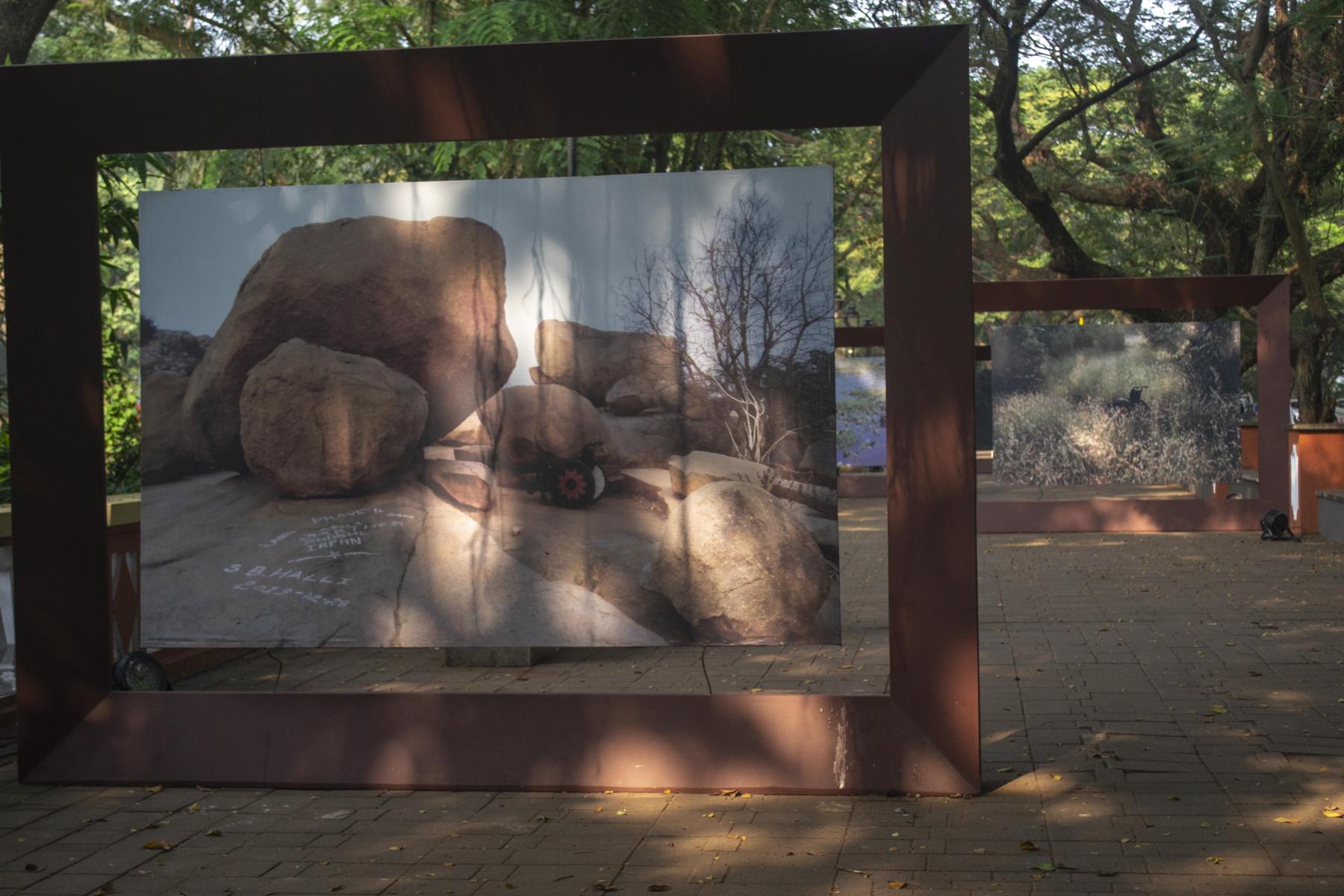
The wheelchair on top of a boulder-filled landscape. The images of the installation confront the viewer with issues around accessibility and the need to make all spaces inclusive.
The brochure given to visitors at the exhibition site contained interesting travel anecdotes, poems and lived experiences. Chaturvedi shared varied incidents he has experienced, like the unknown hands that helped him with the best darshan at the Shirdi temple, or the tourist guide at Mandu who refused to help him to the terrace of the pavilion, stating that he never even took his father here, who also used a wheelchair. When he eventually reached the pavilion with help from some college kids, the guide realised his mistake.
Along with these images, the installation also included two ramps—one gentle and the other steep—inviting the audience to spend some time in a wheelchair and experience its mobility first-hand. The steep ramp was at a 1:8 ratio while the gentle ramp was at the correct ratio of 1:12. The idea behind the two ramps was to create awareness about the need for correct infrastructure to enable accessibility for wheelchair users.
The experiment on the ramp was an eye-opener for viewers when they could not use the steep ramp without help. It is sadly the everyday reality of wheelchair users, as only the correct ratio of 1:12 can help them move unassisted and independently.
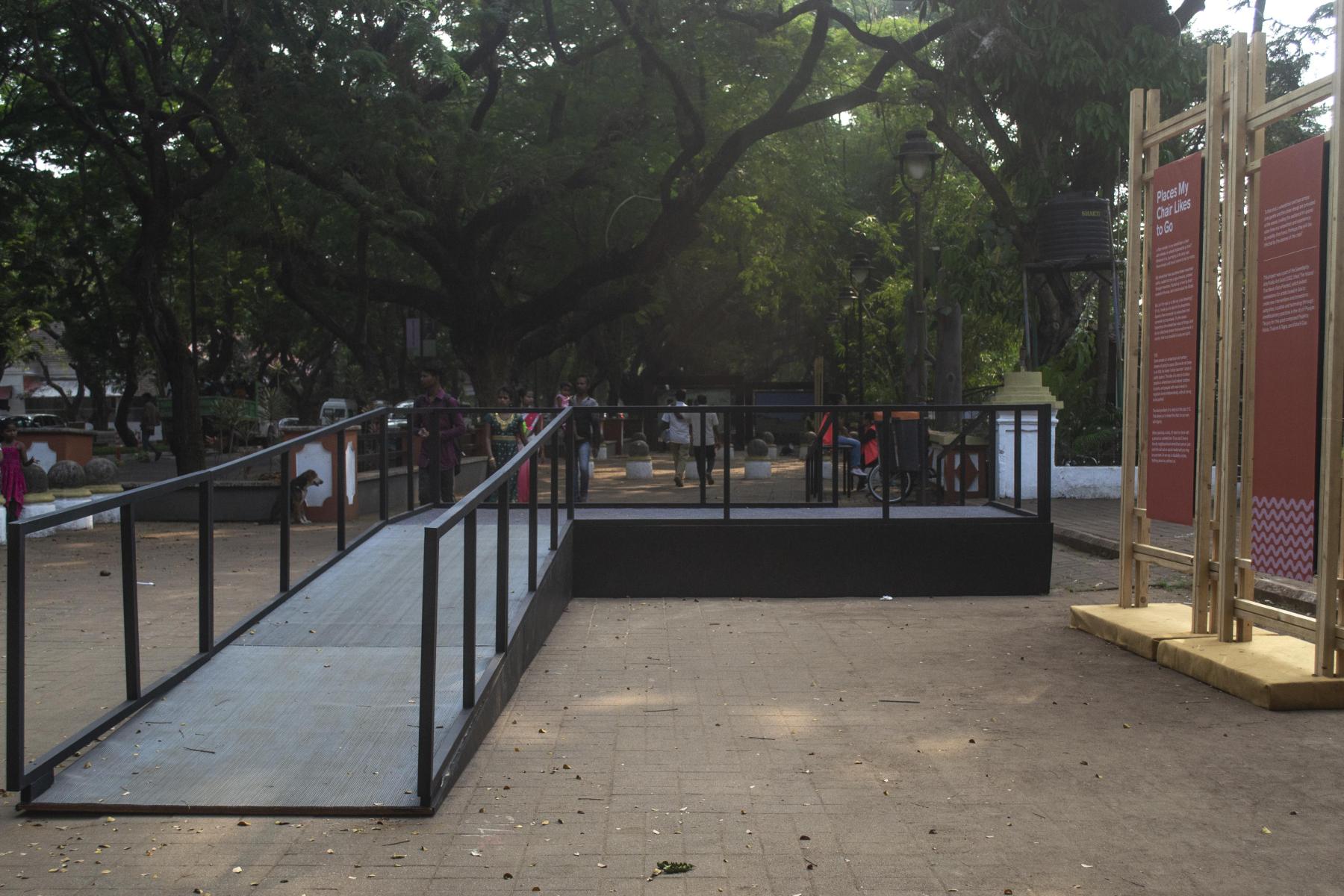
The “gentle” wheelchair ramp at the installation.
The ramps started a conversation among the viewers on how we have taken the needs of disabled people for granted. The experiment was popular among children, with some even using it to cycle or play with. Some adults were too shy to experiment but were curious about the ramps regardless.
“If there is a single takeaway from this project, I would hope that people remember the ratio of 1:12,” says Chaturvedi, who insists that when planning for a ramp, it is pertinent to check with a person in a wheelchair before making infrastructural changes. “As we say in disability circles, ‘Nothing about us, without us.’”
The work harkens to the emancipatory potential of nature; that in the wilderness, everything and everyone is inclusive.
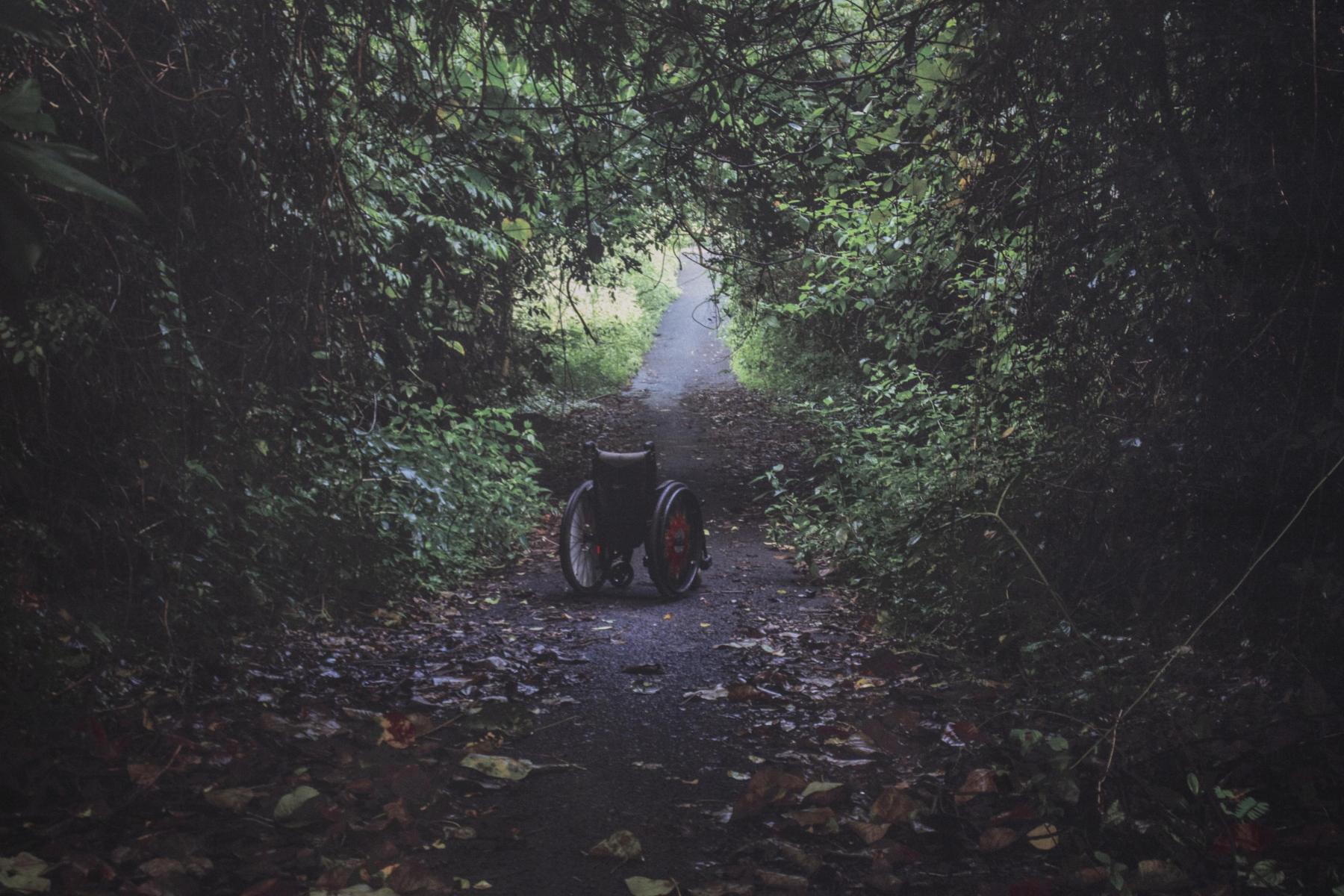
Installation view of the wheelchair wheeling down an empty forested path, unbound by the urban limitations it faces.
The installation will be displayed from 27 to 29 January at the Hyderabad Literary Festival 2023.
To read more on projects from the Serendipity Arts Festival 2022, click here, here and here.
All images courtesy of Salil Chaturvedi and the Serendipity Arts Festival unless stated otherwise.




